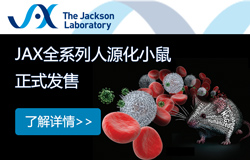多功能胚胎激光破膜儀
Laser-assisted derivation of human embryonic stem cell lines from IVF embryos after preimplantation genetic diagnosis.
T. Turetsky, E. Aizenman, Y. Gil, N. Weinberg, Y. Shufaro, A. Revel, N. Laufer, A. Simon, D. Abeliovich and B.E. Reubinoff. Human Reproduction. Advanced Access, November 2007, doi:10.1093/humrep/dem351
T. Turetsky, E. Aizenman, Y. Gil, N. Weinberg, Y. Shufaro, A. Revel, N. Laufer, A. Simon, D. Abeliovich and B.E. Reubinoff. Human Reproduction. Advanced Access, November 2007, doi:10.1093/humrep/dem351
BACKGROUND: Human embryonic stem cells (hESCs) suitable for future transplantation therapy should preferably be developed in an animal-free system. Our objective was to develop a laser-based system for the isolation of the inner cell mass (ICM) that can develop into hESC lines, thereby circumventing immunosurgery that utilizes animal products.
CONCLUSIONS: These hESC lines can serve as an important model of the genetic disorders that they carry. Laser-assisted isolation of the ICMs may be applied for the derivation of new hESC lines in a xeno-free system for future clinical applications.
Utilization of Laser Assisted Hatching to Improve the Pregnancy Rate of In Vitro Fertilized Bovine Embryos
S. MengesA, H. WeiB, D. FaberB, D. KraemerA, and C. LongA
ADepartment of Veterinary Physiology and Pharmacology, Texas A&M University, College Station, TX 77843, USA, BTransova Genetics, Sioux Center, IA 51250, USA
ADepartment of Veterinary Physiology and Pharmacology, Texas A&M University, College Station, TX 77843, USA, BTransova Genetics, Sioux Center, IA 51250, USA
"These results demonstrate that laser assisted hatching using the XYClone system does not inhibit in vitro embryo viability and development. A significant difference was found in the 60 day pregnancy rate between control and cut embryos. This difference exhibits a large potential for this system to improve 60 day pregnancy rates of in-vitro produced embryos."
The Effect of Lipid Segregation with or without Zona Pellucida Laser Drilling on Post Thaw Embryo Development of In Vitro Produced Bovine Embryos
J.H. Pryor1, C.R. Looney1, S. Romo2, D.C. Kraemer3and C.R. Long3
1Ovagenix, Bryan, TX 77805; 2Facultad de Estudios Superiores Cuautitlan, UNAM, Mexico; 3Texas A&M University, Department of Veterinary Physiology and Pharmacology, College Station, TX 77843
1Ovagenix, Bryan, TX 77805; 2Facultad de Estudios Superiores Cuautitlan, UNAM, Mexico; 3Texas A&M University, Department of Veterinary Physiology and Pharmacology, College Station, TX 77843
The objective of this study was to determine if lipid segregation with or without zona pellucida cutting on post thawed in vitro produced bovine embryos would effect survivability and development.
CBCFLAH and LAH exhibited a significantly greater number of both total and live cells than Control (P<0.05)
Laser-ICSI: A Novel Method For Performing Mouse ICSI That Avoids Piezo-drilling
Bryan J. Woodward and Keith H.S. Campbell, School of Biosciences, University of Nottingham, Sutton Bonington, Leics, LE12 5RD UK
Laser Assisted IVF: A Simple Technique to Improve IVF in Mice without Micromanipulation
Bryan J. Woodward and Keith H.S. Campbell, School of Biosciences, University of Nottingham, Sutton Bonington, Leics, LE12 5RD UK
Bryan J. Woodward and Keith H.S. Campbell, School of Biosciences, University of Nottingham, Sutton Bonington, Leics, LE12 5RD UK
F0 generation mice fully derived from gene-targeted embryonic stem cells allowing immediate phenotypic analyses.
William T Poueymirou, Wojtek Auerbach, David Frendewey, Joseph F Hickey, Jennifer M Escaravage, Lakeisha Esau, Anthony T Dore´, Sean Stevens, Niels C Adams, Melissa G Dominguez, Nicholas W Gale, George D Yancopoulos, Thomas M DeChiara& David M Valenzuela.
William T Poueymirou, Wojtek Auerbach, David Frendewey, Joseph F Hickey, Jennifer M Escaravage, Lakeisha Esau, Anthony T Dore´, Sean Stevens, Niels C Adams, Melissa G Dominguez, Nicholas W Gale, George D Yancopoulos, Thomas M DeChiara& David M Valenzuela.
Nature Biotechnology, 2007. Jan. 25(1):91-99.
A useful approach for exploring gene function involves generating mutant mice from genetically modified embryonic stem (ES) cells. Recent advances in genetic engineering of ES cells have shifted the bottleneck in this process to the generation of mice. Conventional injections of ES cells into blastocyst hosts produce F0 generation chimeras that are only partially derived from ES cells, requiring additional breeding to obtain mutant mice that can be phenotyped. The tetraploid complementation approach directly yields mice that are almost entirely derived from ES cells, but it is inefficient, works only with certain hybrid ES cell lines and suffers from nonspecific lethality and abnormalities, complicating phenotypic analyses. Here we show that laserassisted injection of either inbred or hybrid ES cells into eight cell–stage embryos efficiently yields F0 generation mice that are fully ES cell–derived and healthy, exhibit 100% germline transmission and allow immediate phenotypic analysis, greatly accelerating gene function assignment.
Developmental competence of human in vitro aged oocytes as host cells for nuclear transfer.
V.J.Hall, D.Compton, P.Stojkovic, M.Nesbitt, M.Herbert, A.Murdoch and M.Stojkovic
V.J.Hall, D.Compton, P.Stojkovic, M.Nesbitt, M.Herbert, A.Murdoch and M.Stojkovic
Human Reproduction, 2007. Jan. 22(1):52–62.
BACKGROUND: Improving human nuclear transfer (NT) efficiencies is paramount for the development of patient-specific stem cell lines, although the opportunities remain limited owing to difficulties in obtaining fresh mature oocytes. METHODS: Therefore, the developmental competence of aged, failed-to-fertilize human oocytes as an alternate cytoplasmic source for NT was assessed and compared with use of fresh, ovulation-induced oocytes. To further characterize the developmental potential of aged oocytes, parthenogenetic activation, immunocytochemical analysis of essential microtubule proteins involved in meiotic and mitotic division, and RT–PCR in single oocytes (n = 6) was performed to determine expression of oocyte-specific genes [oocyte-specific histone 1 (H1FOO), growth differentiation factor 9 (GDF9), bone morphogenetic protein 15 (BMP15), zygote arrest 1 (ZAR1)] and microtubule markers [nuclear mitotic arrest (NuMA), minus-end directed motor protein HSET and the microtubule kinesin motor protein EG5]. RESULTS: For NT, enucleation and fusion rates of aged oocytes were significantly lower compared with fresh oocytes (P < 0.05). Cleavage rates and subsequent development were poor. In addition, parthenote cleavage was low. Immunocytochemical analysis revealed that many oocytes displayed aberrant expression of NuMA and EG5, had disrupted meiotic spindles and tetrapolar spindles. One of the six oocytes misexpressed GDF9, BMP15 and ZAR1. Two oocytes expressed EG5 messenger RNA (mRNA), and HSET and NuMA were not detectable. RT-PCR of mRNA for oocyte specific genes and microtubule markers in single aged oocytes. CONCLUSIONS: Thus, aneuploidy and spindle defects may contribute to poor parthenogenetic development and developmental outcomes following NT.
A new approach to cyropreservation of large equine embryos by vitrification after blastocoel micromanipulation.
J. Scherzer, R. A. Fayrer-Hosken, L. Ray and G. Heusner
Reproduction, Fertility and Development 19(1) 225 - 226 (abstracts from IETS 2007)SUMMARY (EXCERPT)
J. Scherzer, R. A. Fayrer-Hosken, L. Ray and G. Heusner
Reproduction, Fertility and Development 19(1) 225 - 226 (abstracts from IETS 2007)SUMMARY (EXCERPT)
Vitrified large equine embryos >800 µm recovered on Day 8 after ovulation have not been successfully transferred yet. In this study, we examined the effects of reduction of the blastocoelic fluid and microinfusion of a cryopreservative prior to vitrification on pregnancy outcome.
To facilitate aspiration and microinfusion, a laser system (XYclone; Hamilton Thorne Biosciences, Beverly, MA, USA) was applied. Approximately 20% of the total blastocoelic fluid was removed using a standard micromanipulator and microcapillary system (Eppendorf). All embryos were then vitrified as previously described (Eldridge-Panuska et al. 2005 Theriogenology 63, 1308–1319).
None of the control embryos nor the split embryo in the treatment group led to the formation of an embryonic vesicle. However, the blastocyst, which had undergone both aspiration of blastocoelic fluid and microinfusion of VS1 (#5), had formed an embryonic vesicle at Day 15 after ovulation. During a further exam on Day 28, the uterine tone in the recipient was still increased, but ultrasonography revealed resorption of the embryo, which was probably caused by heat stress. Nevertheless, we will test this protocol for the cryopreservation of large equine embryos on a larger scale during the next breeding season.
Laser-assisted blastocyst dissection and subsequent cultivation of embryonic stem cells in a serum/cell free culture system: applications and preliminary results in a murine model.
Noriko Tanaka1, Takumi Takeuchi1, Queenie V Neri1, Eric Scott Sills2 and Gianpiero D Palermo1
1Center for Reproductive Medicine and Infertility, Weill Medical College of Cornell University, New York, NY 10021, USA
2Department of Obstetrics, Gynecology and Reproductive Research, Murphy Medical Center, Murphy, NC, USA
Journal of Translational Medicine 2006, 4 : 20 doi:10.1186/1479-5876-4-20
1Center for Reproductive Medicine and Infertility, Weill Medical College of Cornell University, New York, NY 10021, USA
2Department of Obstetrics, Gynecology and Reproductive Research, Murphy Medical Center, Murphy, NC, USA
Journal of Translational Medicine 2006, 4 : 20 doi:10.1186/1479-5876-4-20
Effects of Caffeine on the In Vitro Development of Bovine Nuclear Transfer Embryos.
Maalouf WE, Lee J-H, Campbell KHS. Animal Development and Biotechnology Group, School of Biosciences, University of Nottingham. Presented at IETS 2006
XYClone™ Laser System: A Novel Technique for Mouse Intracytoplasmic Sperm Injection (ICSI). William A. Richie, Embryologist, Division of Gene Expression and Development, Roslin Institute, Roslin Midlothian UK EH25 9PS and K. Bradley, Hamilton Thorne Biosciences, Beverly, MA 01915 USA
A New Method to Produce Mice Fully Derived from Embryonic Stem Cells. William T. Poueymirou, Wojtek Auerbach, Joseph Hickey, Jennifer Escaravage, David Frendewey, Niels C. Adams, George D. Yancopoulos, Thomad D. DeChiara, and David M. Valenzuela. Regerneron Pharmaceuticals, Inc. 777 Old Saw Mill River Road., tarrytown, NY, USA. Presented at the 2005 Transgenic Technology Meeting, Barcelona, Spain, September 11-13, 2005
A Feeder Cell- and Serum-Free System to Harvest Embryonic Stem Cells From Laser Dissected Blastocysts. T. Takeuchi, N. Tanaka, Q.V. Neri, Z. Rosenwaks, G.D. Palermo. Cornell University, New York, NY. Abstract from American Society of Reproductive Medicine, September 2005
Laser zona drilling does not induce hsp70i transcription in blastomeres of eight-cell mouse embryos.
Cristina Hartshorn, Ph.D., Aleksandra Anshelevich, B.S.,
Lawrence J. Wangh, Ph.D.
Lawrence J. Wangh, Ph.D.
To assess whether zona drilling with a 1,480-nm laser induces heat shock in eight-cell embryos, we measured hsp70i RNA levels in sets of single blastomeres isolated after laser treatment of mouse embryos that had or had not been heated at 43°C. Unlike heating, laser zona drilling did not stimulate hsp70i expression, even in the blastomeres closest to the laser beam, corroborating the safety of this procedure for assisted reproduction.
(Fertil Steril 2005;84:1547–50. ©2005 by American Society for Reproductive Medicine.)
(Fertil Steril 2005;84:1547–50. ©2005 by American Society for Reproductive Medicine.)
Copyright(C) 1998-2025 生物器材網 電話:021-64166852;13621656896 E-mail:info@bio-equip.com





